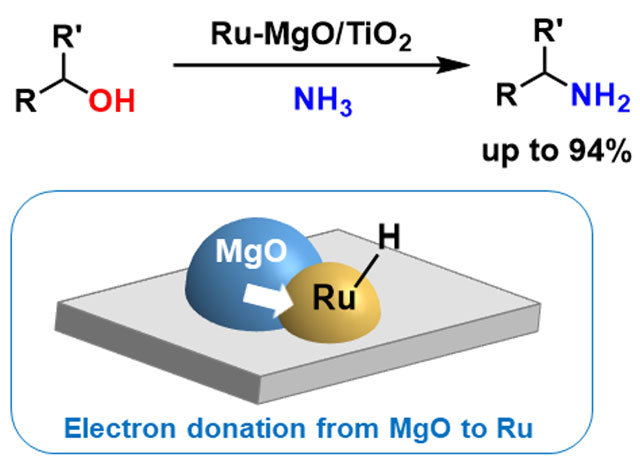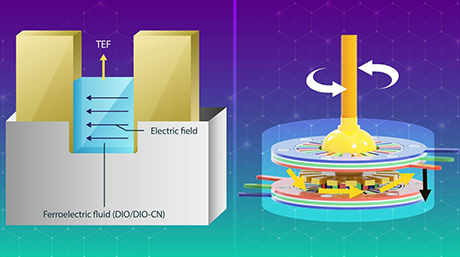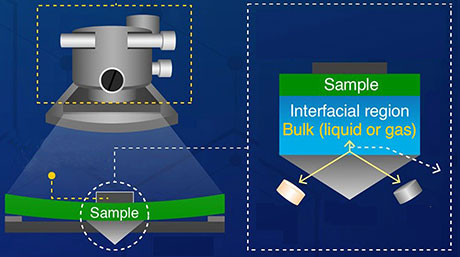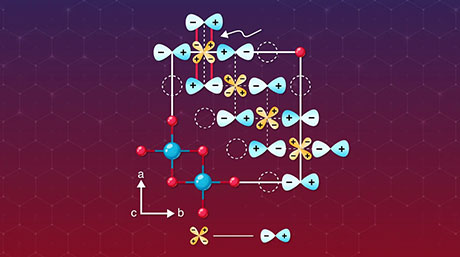Materials Science and Engineering News
An enhanced ruthenium-based catalyst for primary amine synthesis
Researchers at Tokyo Institute of Technology (Tokyo Tech) have developed a high-performance reusable ruthenium-based catalyst for the production of primary amines. Their method represents a major advance for the development of efficient catalysts that enable selective conversion of alcohols into primary amines under mild reaction conditions.
Primary amines are extremely versatile building blocks that are used in the preparation of many kinds of dyes, detergents, pharmaceuticals and agricultural chemicals. So far, several methods have been developed to produce primary amines using catalysts containing ruthenium, cobalt and platinum, all of which require the addition of molecular hydrogen. Synthesis of primary amines by direct substitution of alcohols with ammonia has been a longstanding challenge.
Now, researchers at Tokyo Tech report a heterogeneous[1] ruthenium-based catalyst (Ru–MgO/TiO2) capable of driving direct amination[2] of alcohols to produce primary amines without having to introduce hydrogen gas. They showed that the catalyst works at low temperatures, of around 100°C. The ready availability of alcohols and low cost of ammonia make the system both cost-effective and environmentally friendly.
Compared with previous ruthenium-based systems, Ru–MgO/TiO2 achieved higher yields (up to 94%) of the desired primary amines. Reuse experiments showed that after base treatment, the catalyst could be reused three times without significant loss of activity.
Their study, published in Chemical Science, suggests that the MgO component of the catalyst plays an important role in enhancing reactivity through electron donation from MgO to Ru.
The researchers point out that the new catalytic system could be applied to a variety of alcohols, and could serve as a design guide for other new heterogeneous catalysts.
In addition, Ru–MgO/TiO2 could provide an efficient synthetic route for the production of 2,5-bis(aminomethyl)furan (BAMF), an attractive compound used as a hardener for epoxy resins, which are used in many types of coatings and adhesives. Using biomass-derived 2,5-bis(hydroxymethyl)furan (BHMF) as a substrate, the study showed the desired BAMF was obtained at 86% yield, outperforming previous systems.

Figure 1. Direct amination of alcohols over Ru-MgO/TiO2 activated by electron donation from MgO
- Technical Terms
- Reference
| Authors : | Yusuke Kita1, Midori Kuwabara1, Satoshi Yamadera1, Keigo Kamata1 and Michikazu Hara1,2 |
|---|---|
| Title of original paper : | Effects of ruthenium hydride species on primary amine synthesis by direct amination of alcohols over a heterogeneous Ru catalyst |
| Journal : | Chemical Science |
| DOI : | 10.1039/d0sc03858j |
| Affiliations : |
1 Laboratory for Materials and Structures Institute of Innovative Research, Tokyo Institute of Technology 2 Advanced Low Carbon Technology Research and Development Program (ALCA), Japan Science and Technology Agency (JST) |
- Way, Shape and Form: Synthesis Conditions Define the Nanostructure of Manganese Dioxide | Tokyo Tech News
- Fuelling the World Sustainably: Synthesizing Ammonia using Less Energy | Tokyo Tech News
- Green catalysts with Earth-abundant metals accelerate production of bio-based plastic | Tokyo Tech News
- Barium ruthenate: A high-yield, easy-to-handle perovskite catalyst for the oxidation of sulfides | Tokyo Tech News
- A ruthenium-based catalyst with highly active, flat surfaces outperforms metal-based competitors | Tokyo Tech News
- Highly efficient ammonia synthesis catalyst developed | Tokyo Tech News
- Reusable ruthenium-based catalyst could be a game-changer for the biomass industry | Tokyo Tech News
- Chemoselective acetalization by a bifuncional cerium phosphate catalyst | Tokyo Tech News
- Development of highly active and stable ammonia synthesis catalyst under low temperatures | Tokyo Tech News
- Drastic Improvement of Ammonia Production at Metal-Insulator Transition | Tokyo Tech News
- A new catalyst redefines rate limitations in ammonia production | Tokyo Tech News
- Hara & Kamata Laboratory
- Researcher Profile | Tokyo Tech STAR Search - Michikazu Hara
- Researcher Profile | Tokyo Tech STAR Search - Yusuke Kita
- Researcher Profile | Tokyo Tech STAR Search - Keigo Kamata
- Laboratory for Materials and Structures
- Institute of Innovative Research
- Materials Science and Engineering Graduate Major|Education|Department of Materials Science and Engineering, School of Materials and Chemical Technology
- Energy Science and Engineering Graduate Major|Education|Department of Materials Science and Engineering, School of Materials and Chemical Technology
- Latest Research News
Further Information
Assistant Professor Yusuke Kita
Institute of Innovative Research, Tokyo Institute of Technology
Email kita.y.ad@m.titech.ac.jp





